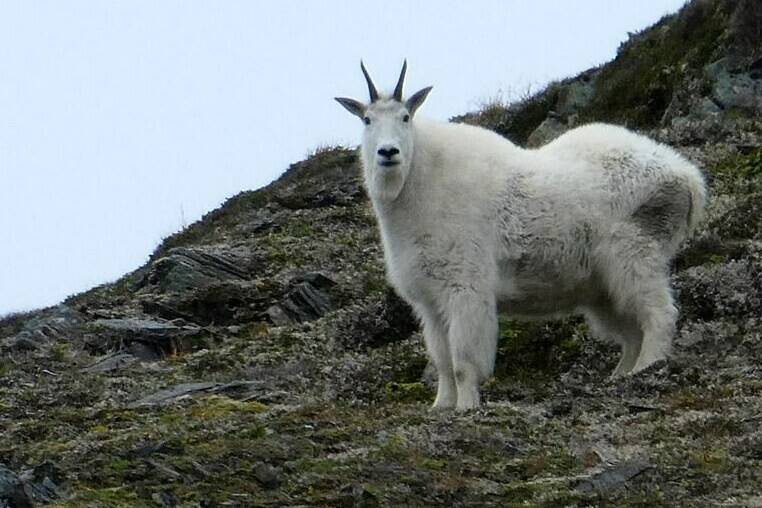British Columbia’s central coast is losing an animal of significant cultural value to the region’s Indigenous people as fewer mountain goats are seen in its craggy peaks, says a new study.
The study published Tuesday in the open-access peer-reviewed journal Conservation Science and Practice also highlighted the importance of listening to Indigenous Peoples because they first noticed a decline in the population years ago.
Douglas Neasloss, chief councillor of the First Nation, which participated in the study, said he’s been watching the decline for more than 20 years in its territory.
“Mountain goats are really important,” Neasloss said in an interview.
“We use the mountain goat in our songs, our dances, in our stories. Certainly a big part of our food, a big part of our diet. It was often used for trade amongst nations in the central coast.”
Tyler Jessen, the lead author of the study, said researchers from the University of Victoria and the Raincoast Conservation Foundation used a combination of data compiled by the First Nation since the 1980s along with other methods to track the mountain goat population.
An aerial survey of about 500 square kilometres of Kitasoo Xai’xais Nation territory was undertaken in the summers of 2019 and 2020 to understand population density, he said.
“There’s not many goats that are in that coastal area, especially when you compare it to the interior populations like the Rocky Mountains,” said Jessen, a PhD student at the University of Victoria and a scholar with the Raincoast Conservation Foundation.
Researchers also looked at British Columbia hunting records dating back to 1980, he said. The records showed hunters are less successful at hunting mountain goats now or that it takes them longer to find one.
“People would typically see them from the water on a boat while fishing or while working,” he said. “You could just look up and you could see mountain goats on the cliffs in these coastal fiord systems. But not anymore.”
A lack of baseline information means researchers weren’t able to quantify the change in population, Jessen said.
British Columbia has about 50 per cent of the world’s mountain goats but numbers on the animals are hard to come by because there’s limited research and they’re difficult to study in the remote areas they inhabit, he added.
“One of the things that we are trying to highlight is how Indigenous knowledge and Indigenous Peoples can act as sentinels of this change,” he said.
“We’re not monitoring a lot, but there’s still people who are living there who can point to these changes.”
The study said early warnings from Indigenous Peoples in one area can potentially uncover what’s happening on a larger scale.
“In this case, early concerns by the Kitasoo Xai’xais First Nation triggered investigations that revealed evidence of potential decline in goats well beyond Kitasoo Xai’xais First Nation territory,” said the study.
The causes for the decline, Jessen said, include global warming, hunting and attacks by predators. Mountain goats reproduce slowly and are sensitive to any human disturbance, he said.
Neasloss said the Kitasoo Xai’xais First Nation has stopped hunting mountain goats to help preserve the population.
“I’m almost 40 now,” he said.
“I used to be a tour guide. I used to walk out in the territory every day for seven months of the year and I used to see lots of mountain goats. I haven’t seen one in years. What a sharp turn in the last 20 years. So, if we lose the mountain goat, that will just be devastating both culturally and ecologically.”
—Hina Alam, The Canadian Press
RELATED: Conservation group Wildsight looks for solutions to save Radium bighorn sheep

